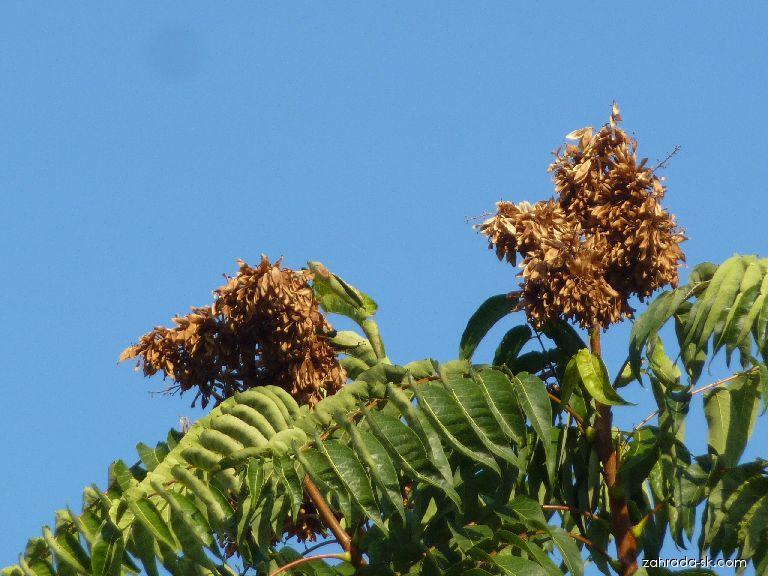
Invasive plant
species
Giant hogweed (heracleum mantegazzianum)
Biennial to perennial, toxic plant growing to a height of 2-5m. Causes serious skin damage similar to burns.
The average plant is able to produce about 20,000 seeds. The species has spread to Europe from the Western Caucasus.
It blooms between July and August




Impatiens glandulifera
In Slovakia, this herb grows mainly along watercourses. The species has spread to Europe from the subtropical regions of the western and central Himalayas, Nepal and Kashmir. Where it grows, the space for native plant species disappears.
A single plant can produce up to 5,000 round seeds a year.
It blooms from July to October.
Giant goldenrod (solidago gigantea)
It comes from North America. This species was imported to Europe as a honey-producing and decorative plant. It is a strong pollen allergen!
At present, they grow en masse mainly on neglected land, along railways and roads, but also in flood areas and watercourses.
They spread by creeping, subterranean undergrounds.
It blooms between August and September.




Asian knotweed (fallopia japonica)
The species of Japanese and Sakhalin buckwheat come from Asia, where they have the center of diffusion in the Japanese islands.
The Czech buckwheat is a crossbreed, which was created by crossing the original two in Europe. They grow in deserted places with disturbed vegetation, in the vicinity of watercourses, roads, railways, but they also spread to the original biotypes.
It blooms between August and September.
Jerusalem artichoke (topinambur)
The original homeland of Jerusalem artichoke was Mexico, then spread to America and was later transported to France and Russia. This tuberous plant can reproduce and survive even where other plants die.
It does not extract any pollutants from the soil and is therefore a completely pure plant. It can even survive a radioactive attack. The tubers resemble ordinary potatoes.
It blooms from August to October.




Common ragweed (ambrosia artemisiifolia)
The original area of the species is in North America. It most likely reached Europe together with grains.
The plant’s life strategy is based on the production of a large number of easily germinating seeds, which are spread by wind over long distances. It is a strong pollen allergen!
It blooms from August to October.
Negundo ace-roides noench
Wood plant with a smooth gray-brown bark, which reaches a height of up to 20 meters. The species comes from North America.
It was imported as a decorative tree and gradually spread from the parks to the surrounding countryside. The fruit is a winged bipod. With this type of fruit, unfortunately, mechanical removal by excavation is not enough.
It blooms between April and May.




Ailanthus altissima
A tree that grows to a height of 20 to 25 meters. The species comes from Asia (China).
It was imported to Europe as a decorative tree. In the first year of life it can grow to a height of 2 meters. Its purely mechanical removal by excavation is prohibited.
It blooms between July and August.

nearby is located

